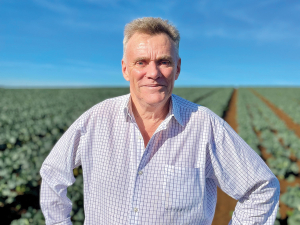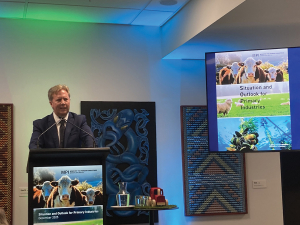Horticulture and viticulture are, together, New Zealand’s fourth-largest export industry.
In the year to June 2016, horticulture and viticulture earned $4.1 billion from exports, according to figures from the Ministry for Primary Industries’ ‘Situation and Outlook for Primary Industries 2016’, and this is predicted to rise to at least $5 billion by June 2017. To maintain this growth and high performance requires two things: labour for harvest and pruning and internationally accredited assurance programmes.
Skilled, reliable workers must be available at peak times, in particularly during harvest, and for pruning and other seasonal activities. The September 30, 2016 NZIER report ‘Horticulture and Viticulture Labour Market Forecasts -- Kiwifruit, Pipfruit, Summerfruit and Wine Grapes’ is an independent analysis of the labour needed to keep growing the horticulture and viticulture industries. It assesses the supply of workers and provides a robust labour forecast in the medium term.
The NZIER report shows the following:
• Each year 27,600 to 35,800 people work in the horticulture and viticulture industries picking, pruning and packing
• Permanently employed NZers and recognised seasonal employer (RSE) workers are the most productive employees
• The peak gap for pickers, pruners and packers for 2016-17 ranges from 1000 workers to a worst-case scenario of almost 6000 workers.
This report provides the basis for determining how we can meet our labour requirements for the coming seasons, and is a useful assessment.
Horticulture is doing what it can to employ young Kiwis. Our industry policy is to employ NZers first, and we run programmes in Bay of Plenty, Hawke’s Bay and Nelson to encourage more young people into the industry. In other areas we are developing programmes and many employers run their own programmes. Our employers are also acutely aware of the problems with employing some young NZers, such as:
- Drugs: for obvious reasons, training institutions and the horticulture industry take a dim view of P and other drugs. These cannot be allowed for many reasons, particularly health and safety of our workers.
- Reliability: turning up to work on time every work day, and staying for a full day’s work, challenges some young Kiwis.
- Skills: horticulture is a skill-based industry, but these skills can be learned and employers are always looking for young Kiwis who have the aptitude to develop the required skills and an enduring career in horticulture.
Most of the 27,600 to 35,800 people working in horticulture and viticulture -- picking, pruning and packing each year -- are NZers; the RSE Pacific Island scheme accounts for only 9500 of those workers.
As the NZIER report points out, we will need many more workers to grow the industry. These new workers will be both NZers and RSE workers, but our focus is on employing as many NZers as possible provided they are the right match for the job and show an aptitude to develop the necessary skills.
The other key ingredient for growth is the good agricultural practice (GAP) and good manufacturing practice (GMP) programmes that provide audited quality systems that incorporate traceability. Examples of GAP programmes include GLOBALG.A.P and New Zealand GAP.
These are robust, internationally accredited schemes accepted by the major retailers we sell our products to. It would not be possible to sell our products and grow our businesses without these retailers accepting these food safety schemes.
We are working to have these schemes accepted under NZ legislation now being considered by Parliament. Our focus is to minimise compliance costs and maximise food safety through our existing programmes that meet the expectations of our consumers.
The combination of skilled and reliable labour at crucial times of the year and adherence to our internationally recognised assurance schemes are two of the ingredients that will ensure our industry reaches its growth goals.
• Mike Chapman is Horticulture New Zealand’s chief executive.











